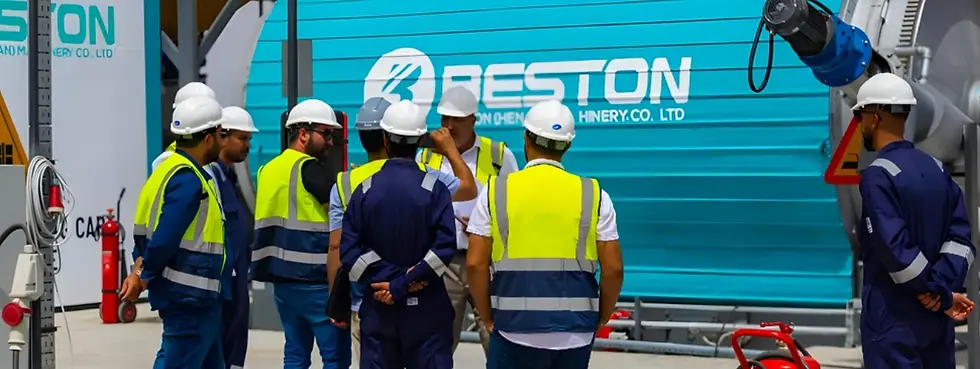Advantages of Plastic Pyrolysis Over Incineration
- wastetoenergy
- Jul 1, 2025
- 4 min read
The issue of plastic waste disposal continues to pose significant challenges to industries, governments, and environmental groups globally. Traditional methods such as incineration have been used for decades to manage plastic waste, but with the increasing awareness of environmental concerns, alternatives like plastic pyrolysis are gaining ground. Among the various waste-to-energy technologies available, pyrolysis stands out for its distinct advantages over incineration, especially in terms of efficiency, environmental impact, and resource recovery.
Efficiency of Energy Recovery
In the incineration process, plastic waste is burned at high temperatures, and the energy released is converted into heat or electricity. However, incineration typically operates at lower efficiencies, as much of the energy is lost as heat. Moreover, the energy recovery from incineration is dependent on the calorific value of the plastic material, which can vary widely. Plastics like polyvinyl chloride (PVC) and polyethylene terephthalate (PET) release less energy compared to other materials, making the process less efficient.
On the other hand, a plastic pyrolysis plant operates under controlled thermal decomposition, breaking down plastic into valuable byproducts such as oil, gas, and biochar. The pyrolysis process is much more energy-efficient, as it can be fine-tuned to maximize the yield of liquid fuel and gaseous byproducts, both of which can be used to power the pyrolysis plant itself, thus reducing overall energy consumption. The liquid oil produced can also serve as a sustainable alternative to fossil fuels in various industries, contributing to the creation of a circular economy.

Lower Emissions and Cleaner Operation
Incineration, while effective for reducing the volume of waste, produces harmful emissions, including carbon dioxide (CO₂), nitrogen oxides (NOx), sulfur dioxide (SO₂), and particulate matter. These emissions not only contribute to air pollution but also have long-term effects on the environment, such as contributing to global warming and acid rain. Additionally, incineration can release dioxins and furans, toxic byproducts that can cause severe health problems for both humans and wildlife.
Plastic pyrolysis, in contrast, generates fewer harmful emissions. The process occurs in a closed system with tight temperature and pressure controls, which minimizes the release of volatile organic compounds (VOCs) and other pollutants. Pyrolysis plants are also equipped with advanced filtration systems that capture and neutralize any potential contaminants from the process. As a result, pyrolysis is a cleaner alternative to incineration, with lower carbon footprints and fewer harmful pollutants.
Resource Recovery and Sustainability
While both pyrolysis and incineration aim to reduce plastic waste, their outcomes differ significantly when it comes to resource recovery. Incineration reduces plastic waste to ash, which often contains toxic residues that require further treatment or disposal in landfills. This process does not allow for the recovery of any valuable materials from the plastic waste, leaving nothing but air pollutants and solid waste.
A plastic into fuel machine, however, transforms plastic waste into valuable byproducts that can be reused in various industries. The oil produced through pyrolysis can be refined and used as a substitute for crude oil in industrial applications, including the production of petrochemicals, diesel fuel, and even electricity generation. The gas produced can be used to fuel the pyrolysis plant itself, making the process more energy-efficient and self-sustaining. Additionally, biochar, a solid byproduct, can be used as a soil conditioner, providing long-term benefits for agriculture by improving soil fertility and water retention.
This process of resource recovery makes pyrolysis a more sustainable waste management option. It aligns with the principles of a circular economy, where materials are reused and recycled, reducing the need for virgin resources and minimizing the environmental impact of waste disposal.
Flexibility in Feedstock
Another key advantage of plastic pyrolysis over incineration is the flexibility it offers in terms of feedstock. Incineration facilities typically require highly sorted and pre-processed waste materials to ensure efficient combustion. Plastics that are mixed with other waste types or contain contaminants can affect the efficiency of the incineration process and result in higher emissions.
Pyrolysis, however, can handle a wider variety of plastic waste, including mixed plastics, plastic films, and even contaminated materials. The feedstock does not need to be sorted extensively, reducing the need for complex waste management systems. This flexibility makes pyrolysis an attractive option for handling the growing amounts of plastic waste, which often consist of diverse and hard-to-recycle materials.
Economic Benefits
When compared to incineration, plastic pyrolysis offers several economic advantages. While the initial investment in a pyrolysis plant may be higher due to the more complex technology involved, the long-term operational costs can be lower. Pyrolysis plants are more energy-efficient and generate valuable byproducts that can be sold or reinvested to offset operational costs. Moreover, pyrolysis plants can often operate with less frequent maintenance and offer a higher degree of automation, reducing labor and maintenance expenses.
Furthermore, the ability to produce oil from plastic waste offers a potential revenue stream, as this oil can be sold as a renewable energy source or refined into various useful products. This business model not only provides financial returns but also contributes to a sustainable waste management system.









Comments